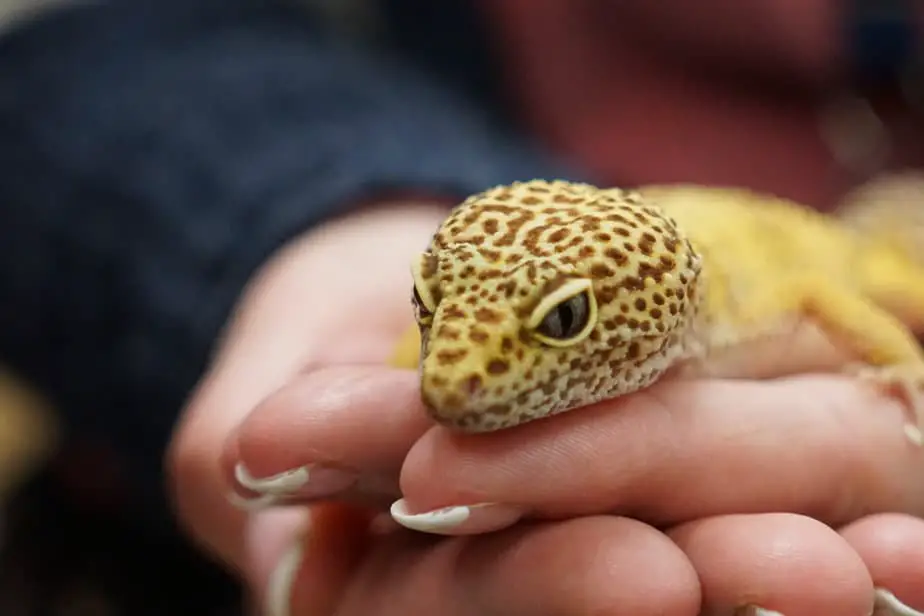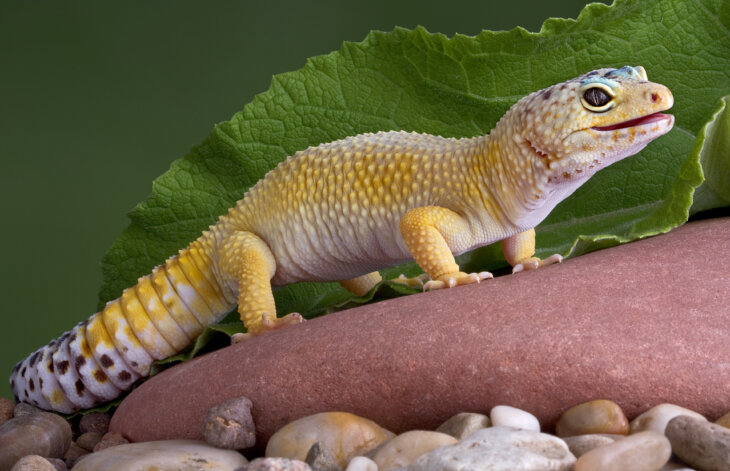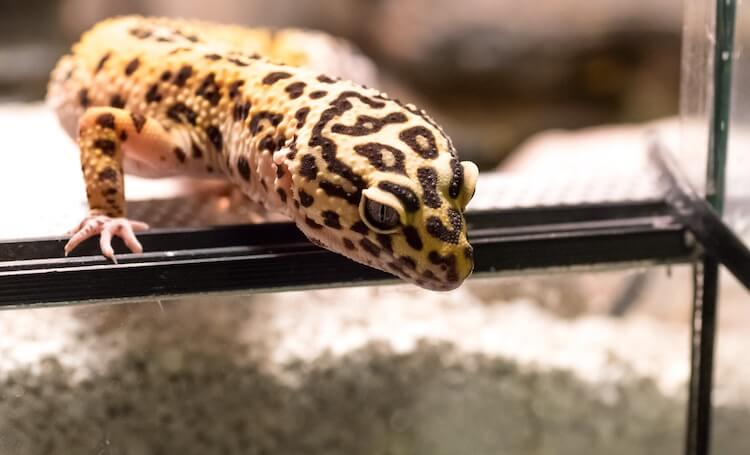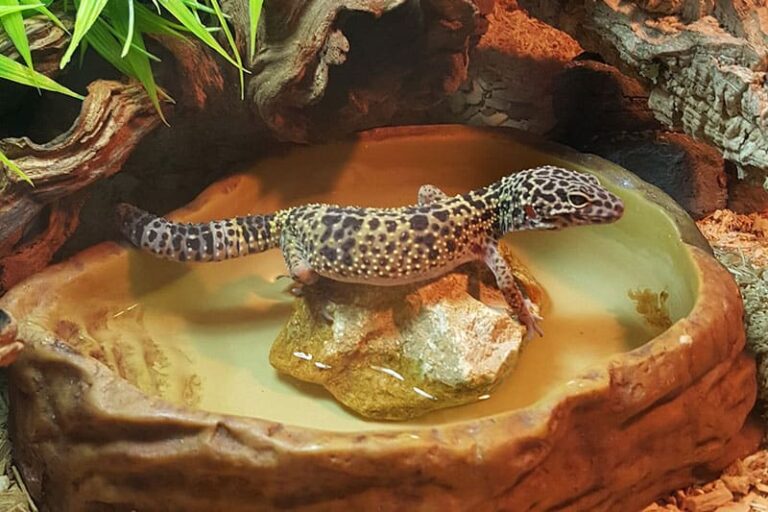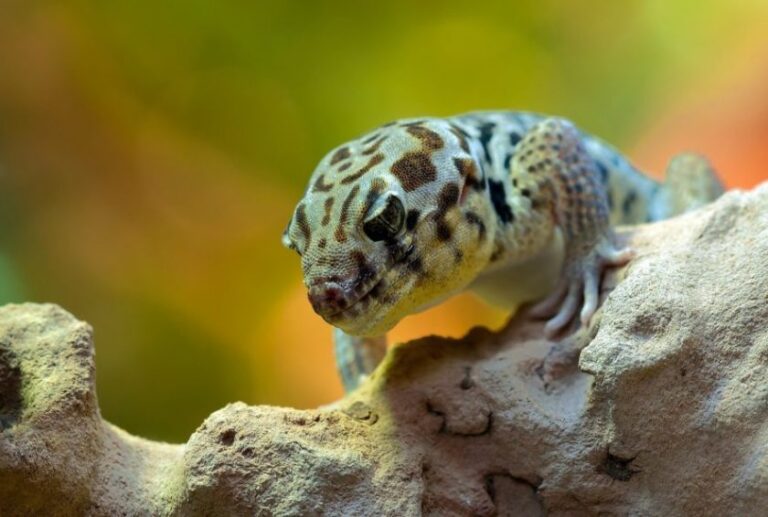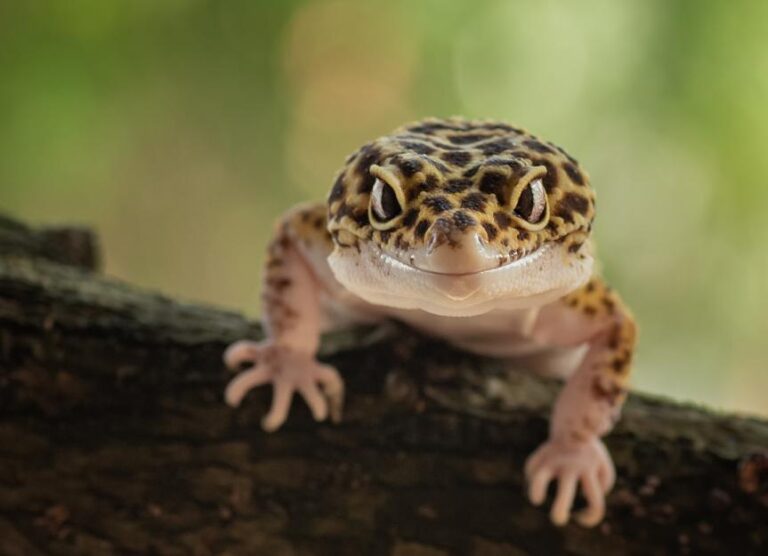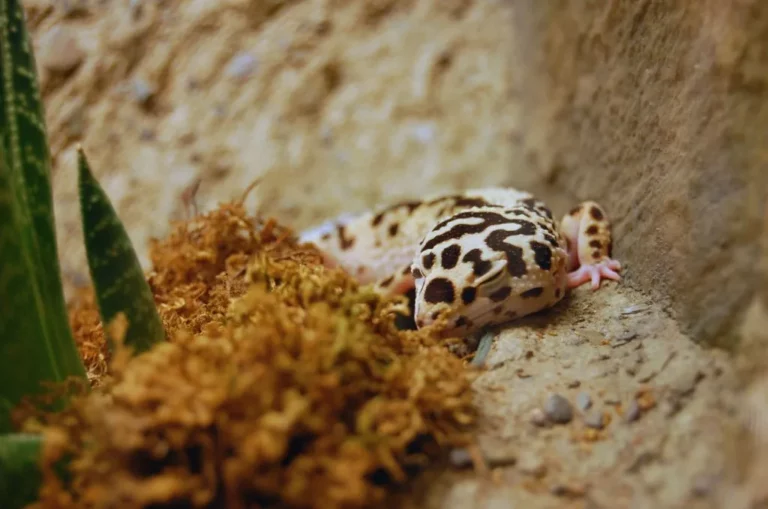Are Leopard Geckos Truly Friendly? Unlocking The Secrets Of
Have you ever wondered about the enigmatic world of leopard geckos? These small, captivating creatures have long been a source of fascination for reptile enthusiasts and curious pet owners alike.
However, it was a warm summer’s day when I first laid eyes on a vivacious leopard gecko named Luna. With her mesmerizing, spotted coat and expressive eyes, she seemed to beckon me closer, igniting a curiosity I couldn’t ignore. Intrigued by the rumors of their docile nature and charming personalities, I decided to welcome Luna into my home.
So, I was thinking, Are leopard geckos, friendly companions?
Yes, leopard geckos are friendly pets. When you first bring one home, it might take a little time for them to get comfortable with you. Therefore, in most cases, they become friendly once they get used to their new home and owner. Just be patient, and you’ll have a friendly companion in no time.
Now, let’s get started.
Tips and Tricks for Fostering a Friendly Relationship with Your Leopard Gecko
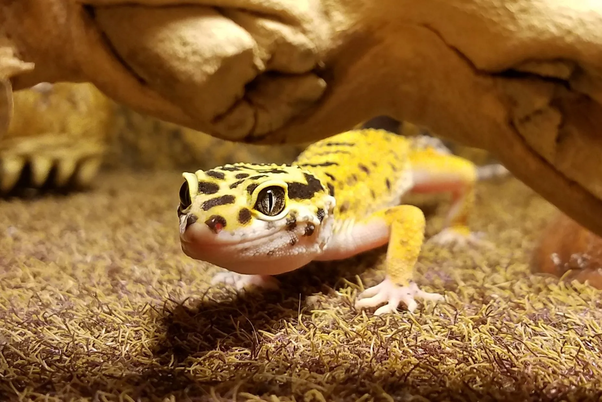
Promoting Trust and Bonding Through Hand Feeding:
Feeding your gecko by hand is a pivotal method for nurturing a strong and unique bond between you and your reptilian companion. This approach not only fosters trust but also establishes a profound connection that is essential to become genuinely friendly toward you.
While it may be convenient to simply deposit food into the enclosure during feeding time, opting to manually pick up the sustenance and personally feed your gecko is the gold standard. By doing so, you allow them to become acquainted with your presence and recognize you as a trustworthy source of nourishment.
Also, if you’re a bit apprehensive about handling your leopard gecko directly, alternative approach is to gently slide or lift the tank open and dispense the food piece by piece until your the gecko has consumed its daily quota. Consistency is key, so endeavor to repeat this method for a dration of 3 to 6 weeks, affording your gecko ample time to become thoroughly accustomed to your presence.
However, should you not feel entirely comfortable with hand-feeding you can still opt for the conventional method of allowing your gecko to consume its meal directly from its food container.
Nurturing a Harmonious Relationship:
Stress is a universal aspect of life, even extending to our animal companions. For leopard geckos, excessive stress can undermine trust-building efforts and complicate the process of forming a deep bond with them.
Unbeknownst to many, seemingly harmless actions can inadvertently induce stress in your gecko. Here are a few seemingly innocuous behaviors that have the potential to trigger significant distress and upheaval in your pet:
- Playing music too loudly can disrupt your gecko’s tranquility and induce stress.
- Introducing your gecko to other animals can be a source of anxiety for them, eroding trust in the process.
- Overhandling your gecko can lead to heightened stress levels and hinder relationship-building.
- Failing to provide sufficient nourishment can cause physical and emotional distress for your gecko.
- Abrupt gestures or actions can startle your gecko and trigger fear.
Furthermore, for newcomers to care, it’s natural to make occasional missteps or assume certain actions are harmless. However, it’s crucial to recognize that, like humans, geckos have triggers that can provoke anxiety or fear.
In the early stages of welcoming your new pet into your home, it can be challenging to remember all the do’s and don’ts. To ensure you maintain a peaceful coexistence with your gecko and prevent unnecessary mistakes, I strongly recommend documenting and practicing these guidelines daily
Maintaining a Reliable Routine:
Leopard geckos, as many of you are aware, are primarily nocturnal creatures. They tend to slumber during the day, aligning with your waking hours. While the temptation to interact with, handle, or feed your gecko during daylight hours is understandable,
So, it’s important to recognize that such actions can impose undue stress on your pet. After all, anyone who hasn’t had enough sleep tends to be less amicable than desired!
To circumvent this issue and ensure a harmonious coexistence with your gecko, it is imperative to establish a consistent schedule that aligns with their nocturnal instincts. This doesn’t necessitate staying up until the wee hours of the morning; fortunately, many leopard geckos become active around 6-7 PM, if not earlier.
Also, paying attention natural awakening time in the early evening is crucial. Subsequently, allocate a dedicated period each night to bond and provide nourishment when they are alert and ready to eat.
Moreover, while your gecko is in its slumber, maintaining a tranquil environment is paramount. This practice minimizes the likelihood of causing stress, resulting in a less irritable and overall healthier and refreshed gecko when it awakens at night.
Cultivating Trust through Distinctive Sounds
Sounds possess the remarkable power to evoke either positive or negative responses, a phenomenon that applies not just to people but also to leopard geckos. To ensure your leopard gecko perceives you as a positive presence in its life, consider establishing an auditory association. When engaging in a pleasant interaction, introduce a distinct sound.
Further, this could be as simple as uttering its name, emitting a gentle chattering noise, or any soothing, non-intrusive sound that your gecko can come to recognize as uniquely yours. Consistency is key; by repeatedly producing the same sound, your gecko will soon associate it with your presence, knowing you pose no threat and are dedicated to its well-being and health.
Additionally, for instance, creating a personalized sound shared exclusively between you and your gecko. Follow this sound with a nurturing action, such as feeding or gentle caressing. Over time, they your gecko may develop a positive association with this sound, shedding its fear of your presence.
For optimal results, initiate this practice on the very first day you bring your gecko home and incorporate it throughout the bonding period and beyond. By doing so, you not only cultivate trust but also maintain it for the duration of your pet’s companionship.
Furthermore, this distinct sound can serve a dual purpose, acting as a calming signal when your gecko is inadvertently startled or stressed. In this way, you not only forge a connection but also provide comfort and reassurance to your cherished gecko companion.
Exercise Caution When Allowing Others to Handle Your Gecko
Leopard geckos make wonderful additions to families, but entrusting their care to inexperienced individuals can potentially lead to issues, both for your gecko’s well-being and safety.
Individuals who lack prior experience with geckos, including beginners, children, or anyone unfamiliar with gecko handling, may inadvertently mishandle these delicate creatures. Their unfamiliarity with a gecko’s behavior and potential reactions can lead to unintentional roughness or, in response to hissing or biting, even accidental drops.
Yet, If you have friends or family members keen on interacting with your gecko, it’s essential to educate them on proper handling techniques and inform them about potential reactions your gecko may exhibit when held by someone new. Additionally, emphasize the importance of limiting the duration of these interactions to minimize stress levels for your gecko.
Then , should you notice your leopard gecko reacting negatively while being held by someone else, it’s advisable to gently retrieve your pet, employing your distinctive calming sound to reassure it of its safety.
Opt for a Front-Opening Terrarium for Gentle Handling
A practice that many experienced gecko owners swear by is the use of front-opening terrariums. This choice offers a host of advantages, especially when it comes to minimizing stress during interactions. Unlike top-opening enclosures, front-opening terrariums allow your gecko to crawl onto your hand at its own pace, reducing anxiety and creating a more comfortable experience.
When you use a front-opening terrarium, your hand naturally descends to the gecko’s level, and the movement remains predominantly horizontal. This approach proves less distressing for these delicate creatures compared to the conventional method of scooping them up from above and lifting them vertically out of the enclosure.
Moreover, top-picking poses potential risks, such as accidental drops or even the inadvertent tearing of their tails if handled improperly. By choosing a front-opening terrarium, you not only facilitate gentler handling but also enhance the safety and well-being of your beloved gecko. This thoughtful consideration ensures that your gecko’s interactions with you are as stress-free and secure as possible.
Top Reasons Why Leopard Geckos Are Good Pets?
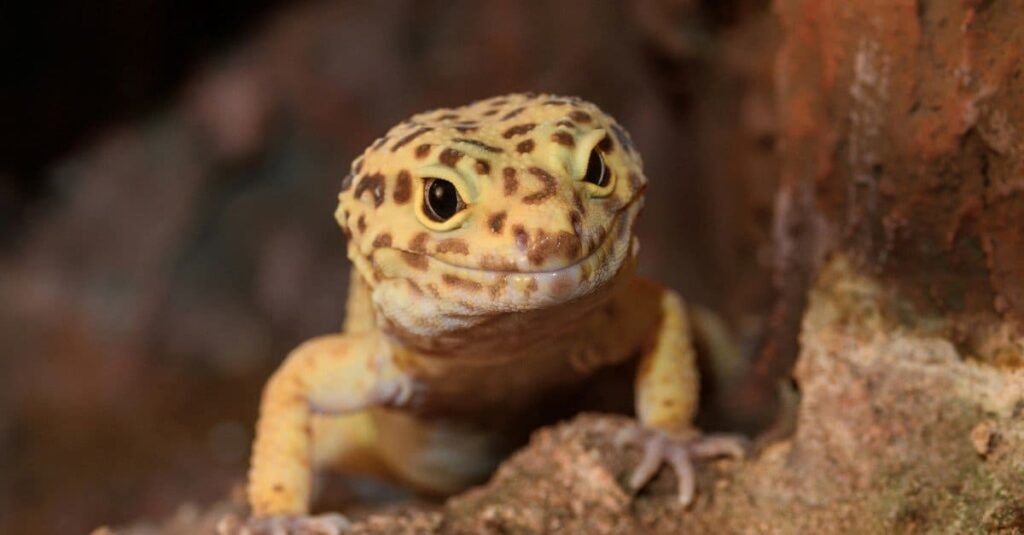
Simplicity in Care: Caring for reptiles often involves intricate housing, heating, and lighting setups, which can be daunting for some pet owners. Leopard geckos, while still requiring some specific conditions, are more forgiving when it comes to minor husbandry errors.
Also, their manageable size also translates to easier maintenance, with their enclosures requiring less time and effort to clean.
Cost-Effective Keeping: They prove to be budget-friendly companions. Their smaller habitat size and low to non-existent UVB lighting needs result in lower overall maintenance costs compared to many other reptiles.
Furthermore, their insectivorous diet provides the option for owners to cultivate their own feeder insects, such as crickets, reducing feeding expenses.
Amiable Disposition: In addition, they are gentle, slow-moving creatures, making them ideal for beginners and supervised interactions with children. They exhibit a remarkable tolerance for handling, often adapting to it with minimal training. It’s important, however, never to force handling to ensure their comfort.
Resilient and Long-Lived: With proper care, can thrive for up to 25 years in captivity. Their hardy nature means they are not overly sensitive to environmental changes, adding to their appeal as low-maintenance pets.
Charming and Unique: They stand out with their distinctive features. They sport vertical slit pupils and movable eyelids, enhancing their captivating appearance. Their large, expressive eyes give them a curious and endearing look, complemented by their vibrant coloration and a variety of available color morphs. Their diminutive size further adds to their suitability as pet reptiles for both children and beginners.
Breeding Simplicity: For those interested in breeding, leopard geckos are accommodating subjects. They typically require minimal intervention and can often breed without any special conditions. While multiple females can coexist with a male, it’s essential to note that males can exhibit aggression toward each other. The convenience of caring for these creatures during breeding is amplified by their compact size and overall ease of care.
How Leopard Geckos Show Friendliness?
Leopard geckos are friendly when they show curiosity, relax, and allow gentle handling. They may explore or bask in their enclosure, indicating contentment. Tail-waving suggests irritation or stress. Understanding their unique personality helps build trust and a friendly bond.
FAQs
Is it safe to touch a leopard gecko?
Yes, it’s generally safe to handle leopard geckos. Just be gentle and approach them calmly to avoid stressing them.
Do leopard geckos have venom?
No, leopard geckos are not venomous; they are harmless reptiles.
Can I kiss my leopard gecko?
No, It’s not advisable to kiss your leopard gecko, as it may startle or stress them. A gentle touch or handling is preferred for interaction.
Is it good if a leopard gecko licks you?
Yes, Leopard geckos don’t lick like mammals do. They may “taste” or explore using their tongue, which is a normal behavior during interaction.
Can my leopard gecko mate?
Yes, Mating leopard geckos should be done with care and knowledge. Breeding should only be attempted if you have a proper understanding of their needs and are prepared to care for the offspring.
Final words:
In my conclusion, I’ve found that leopard geckos can be genuinely friendly creatures when you take the time to understand them. They have their own unique ways of showing friendliness, like being curious about your presence, relaxing in their environment, and even allowing gentle handling. While they may not always seek direct physical contact, their behavior and body language convey their contentment and trust.
In addition, I’ve also acknowledged that tail-waving is a sign of irritation or stress, so it’s important to be attuned to their signals. Building a friendly bond with pets involves respecting their individual preferences and boundaries.
Overall, my experience with Leo has shown me that they can be wonderful and friendly companions in the world of pet reptiles, making them a unique and rewarding addition to my life.

